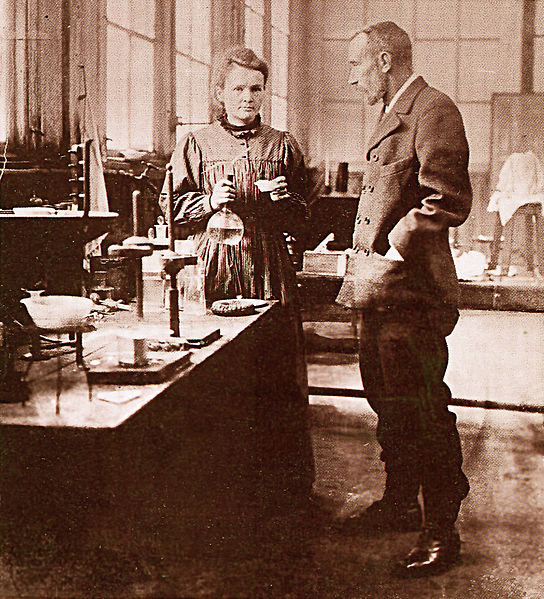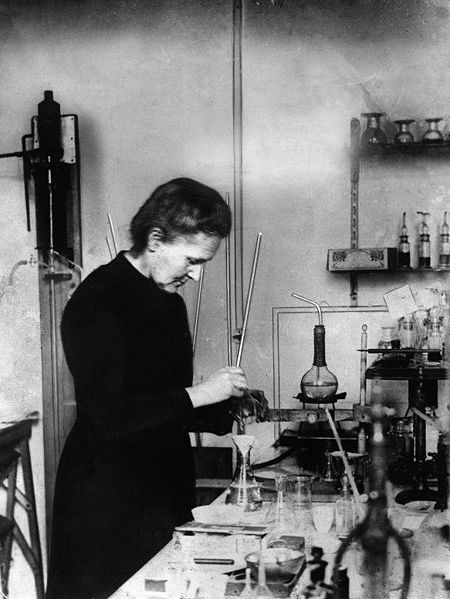
Figure 1 – Marie and Pierre Curie in their Laboratory. From the Wikicommons and in the public domain.
As classic examples of the photographic genre “Scientists at work in their laboratories,” I offer up, first a picture of Marie (1867-1934) and Pierre Curie (1859-1906) in their laboratory (Figure 1) and then a later picture of Marie Curie alone (Figure 2). The second most likely dates after Pierre’s untimely death.
Here the camera serves to chronicle, to capture a moment in time, and to place that moment in its historical context. These images serve three purposes. First, they are portraits of the Curies. Second, they recorded, and now show us, what a physics laboratory was like at the dawn of the twentieth century, And third, pershaps most significantly, since they were at some level posed, they show us the Curies in the way that they wanted people to see them. Image for public figures was as important then as it is now. Pierre looks more than a bit fatherly. And Marie appears demure, not to mention gorgeous in her younger days. What we see of her is her dedication to science, to family, and to country. Despite her taking on a then masculine endeavour, she violates no social norms.

Figure 2 – A later laboratory picture of Marie Curie. From the Wikicommons and in the public domain.
It is important to mention what remarkable people the Curies were. They were physical chemists in the late nineteenth and early twentieth centuries. Chemistry text books began with the essential definition of an element as an immutable substance. You could change its physical form. You could melt or vaporize it. You could react it with other elements. But you could never turn it into another element. But then the Curies’ measurements showed something very strange, elements could change into other elements.They were brilliant experimentalists. Look around at the scientific instruments that they used. Many of them were homebuilt and were the most accurate in the world. They checked and rechecked their calculations. But in the end, they opened up their minds and as scientists they embraced the epiphany before them. And they opened the door to a true understanding of the physical nature of the universe. In this regard, they are the architype of “the scientists.”
In ending, I’d like to draw your attention to a website that chronicles the arrival of these two Parisian dandies, or so they must have seemed to American westerners, on their arrival in Telluride, Colorado to buy dirt.
